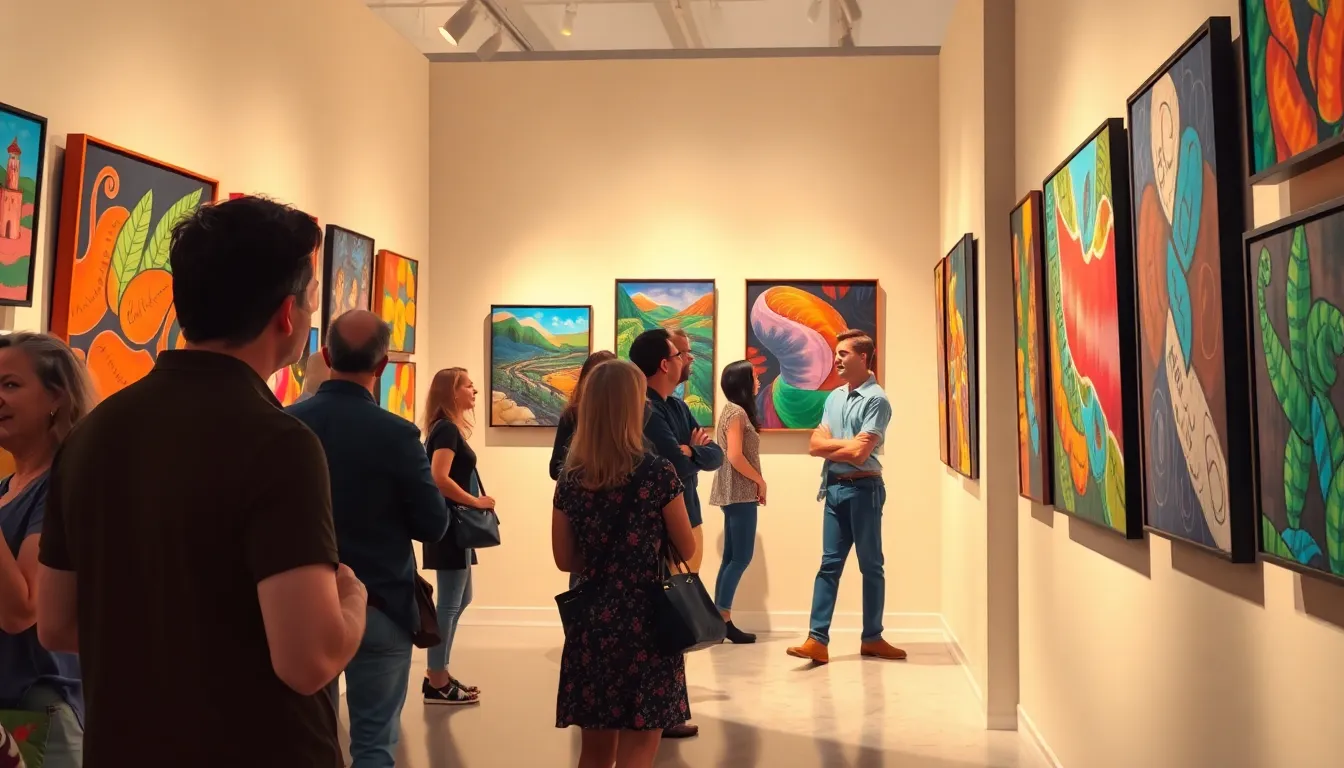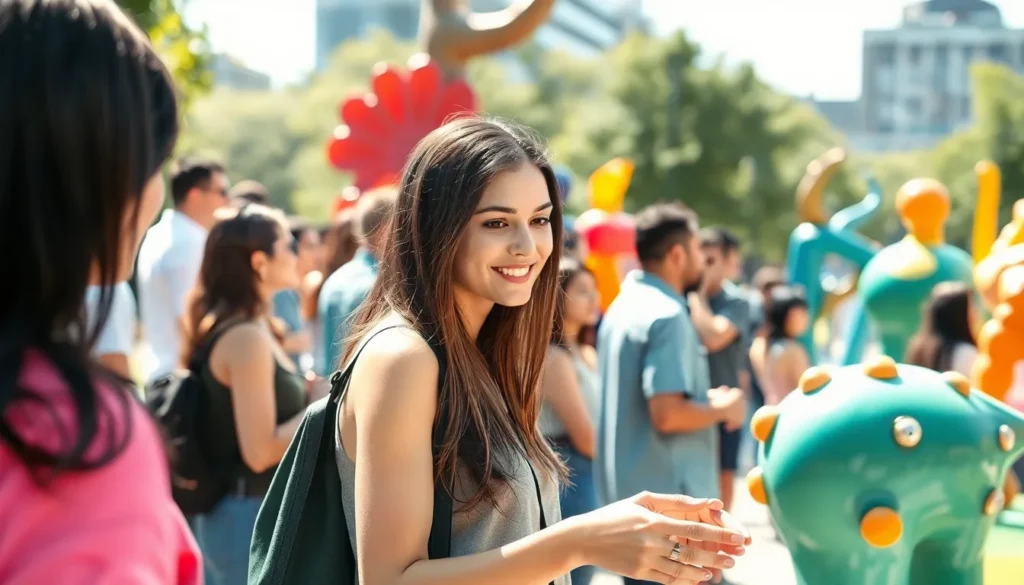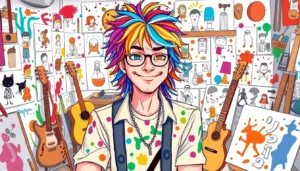Art exhibitions are like a buffet for the soul, offering a feast of creativity that tantalizes the senses. Whether you’re a seasoned art aficionado or someone who thinks a Jackson Pollock is just a spilled paint can, there’s something magical about wandering through galleries filled with color, texture, and emotion. They’re not just displays; they’re experiences that can spark conversations, ignite inspiration, and sometimes even leave you scratching your head in wonder.
Table of Contents
ToggleOverview of Art Exhibitions
Art exhibitions showcase a range of creative expressions, uniting artists and audiences in a shared experience. Various formats, such as solo shows, group exhibitions, or themed displays, highlight distinct artistic approaches and perspectives. Notable examples include contemporary art installations and classical showcases that engage and inform diverse viewers.
Locations for these exhibitions often include museums, galleries, and public spaces, each providing unique contexts for artworks. Each venue plays a vital role in shaping the viewer’s experience and interpretation. Emphasizing accessibility, many exhibitions offer guided tours, workshops, and educational programs.
Visitor interactions with artworks can evoke emotions and spark dialogues, encouraging deeper contemplation. Engaging with art in these settings fosters a sense of community, as individuals exchange thoughts and feelings about the pieces. Curators play an essential role in selecting artworks and organizing placements to create a narrative that resonates with visitors.
Attendance at art exhibitions varies widely, drawing local residents and international tourists alike. Statistics indicate that major events can attract thousands of attendees, demonstrating the cultural significance of these gatherings. Often, social media amplifies the reach of exhibitions, allowing more people to discover and engage with art.
Art exhibitions serve as platforms for emerging artists, providing visibility and opportunities for collaboration. Platforms like Art Basel and the Venice Biennale further establish a global stage for creative talents. Through shared experiences in vibrant artistic environments, art exhibitions enrich lives and promote appreciation for culture and creativity.
Types of Art Exhibitions

Art exhibitions come in various formats, each offering unique experiences. Two prominent types include solo and group exhibitions.
Solo Exhibitions
Solo exhibitions focus on the work of a single artist. These events provide a platform for an artist to showcase their vision and creative journey. Visitors encounter a cohesive narrative that reflects the artist’s style and themes. Typically, the artist’s most significant pieces are featured, allowing for a deep dive into their artistic process. Museums, galleries, and alternative spaces often host these exhibits, enhancing the overall atmosphere. This format encourages dialogue between the artist and the audience, fostering a personal connection. Solo exhibitions remain essential for artists seeking to establish their identity in the art world.
Group Exhibitions
Group exhibitions present the works of multiple artists simultaneously. These events typically center around a common theme or medium, creating a dialogue among diverse artistic expressions. Viewers can appreciate different perspectives within a curated framework, often engaging in conversations spurred by contrasts and similarities. Group shows frequently promote collaboration among artists, encouraging networking opportunities. Locations like art galleries and cultural institutions frequently host these exhibitions, attracting a wide range of audiences. By showcasing various artists, group exhibitions enrich the art scene and highlight emerging talent.
Significance of Art Exhibitions
Art exhibitions play a crucial role in fostering cultural exchange and promoting community engagement.
Cultural Impact
Art exhibitions shape collective identities and cultural narratives. They provide a platform for artists to express diverse perspectives, ultimately enriching public discourse. Communities often find common ground through shared experiences in art, which fosters understanding and empathy. Exhibitions highlight local traditions and contemporary issues, linking past and present in meaningful ways. Strategic placement in urban centers increases accessibility, inviting broader participation from various demographics. Schools and community organizations frequently partner with exhibitions to enhance educational opportunities, making art a vital part of civic life. By engaging audiences in dialogue, exhibitions inspire social change and serve as mirrors reflecting society’s values and aspirations.
Economic Benefits
Art exhibitions significantly contribute to local economies. They attract tourists, leading to increased spending in surrounding businesses. Restaurants, hotels, and shops often see a boost in traffic during major events, driving economic growth. According to the National Endowment for the Arts, arts-related spending generated $877 billion for the U.S. economy in 2017, highlighting the sector’s importance. Moreover, exhibitions create jobs in various fields, such as curation, education, and event management. Cities that prioritize arts and culture experience enhanced urban revitalization and community pride, leading to further investments in infrastructure and tourism. In summary, the economic impact of art exhibitions extends beyond the art world, benefiting entire communities.
Notable Art Exhibitions Around the World
Tokyo’s Roppongi Hills Mori Art Museum frequently showcases contemporary works, drawing attention to both local and international artists. Paris, renowned for its rich art history, hosts exhibitions at the Louvre, bringing iconic masterpieces to life alongside innovative contemporary pieces. New York City’s Museum of Modern Art, or MoMA, presents cutting-edge exhibitions and installations, fostering dialogue around modern artistic expressions.
Berlin’s Hamburger Bahnhof focuses on contemporary art, featuring prominent artists while reflecting the city’s dynamic culture. Venice Biennale, held biennially, showcases national pavilions filled with diverse artistic voices, creating a global dialogue on art. London’s Tate Modern regularly hosts large-scale exhibitions that explore themes of creativity, innovation, and social issues, drawing global visitors.
São Paulo Art Museum emphasizes Brazilian culture while presenting works from prominent international artists. Art Basel, with its events in cities like Miami and Hong Kong, serves as a major marketplace for contemporary art, connecting collectors and galleries globally. Frieze London champions emerging artists and innovative presentations, shaping the contemporary art scene.
Each exhibition offers unique insights into artistic movements, community engagement, and cultural narratives. Attendance at these events varies from locals fascinated by their city’s art scene to international tourists eager for cultural experiences. Major exhibitions have drawn hundreds of thousands of visitors, significantly impacting local economies.
Art exhibitions elevate public discourse by linking culture, identity, and celebration of creativity. Various formats also help in fostering connections between artists and audiences, enhancing appreciation for artistic endeavors. The range of locations—museums, galleries, and public spaces—makes art accessible, encouraging participation and stimulating engagement within diverse communities.
Future Trends in Art Exhibitions
Art exhibitions are evolving, embracing technology and innovative formats. Virtual reality experiences increasingly appear, allowing visitors to immerse themselves in artworks without physical constraints. Augmented reality apps enhance traditional exhibitions, providing interactive opportunities for deeper engagement.
Sustainability is gaining traction, with many exhibitions implementing eco-friendly practices. Artists now prioritize materials that reduce environmental impact, aligning with a global shift towards responsible consumption. Collaborative projects between artists and communities also focus on sustainable practices, reinforcing a shared responsibility for cultural heritage.
Diversity and inclusion are becoming central themes in art exhibitions. Curators increasingly seek to showcase underrepresented voices, promoting a richer understanding of global narratives. This shift fosters dialogue around social justice issues, inviting audiences to explore varied perspectives.
Pop-up exhibitions continue to attract attention, utilizing unconventional spaces. These temporary venues encourage spontaneity and creativity, reaching new audiences in unexpected locations. By adapting to urban settings, they cultivate connections outside traditional gallery spaces.
Data analytics increasingly informs exhibition planning, helping curators understand audience preferences. This approach leads to more tailored and appealing experiences, maximizing engagement. Predictive models can identify potential art trends, driving future exhibitions to reflect current cultural shifts.
The art market remains highly influenced by social media, with online platforms serving as essential tools for promoting artists and exhibitions. Increased visibility leads to higher attendance and facilitates direct interactions between artists and audiences.
These trends highlight the dynamic nature of art exhibitions, showcasing their ability to adapt to societal changes while enriching cultural discourse.
Art exhibitions play a crucial role in enriching cultural landscapes and fostering community connections. They provide a space where diverse artistic expressions can thrive and resonate with audiences. The evolution of these exhibitions, including the integration of technology and a focus on sustainability, reflects the changing dynamics of society and the art world.
As they continue to adapt to contemporary issues and embrace inclusivity, art exhibitions remain vital for cultural exchange. They not only celebrate creativity but also stimulate economic growth and community pride. Engaging with art in these settings offers individuals a chance to explore new perspectives and deepen their appreciation for the arts. The future of art exhibitions promises to be as dynamic and inspiring as the artists they showcase.





